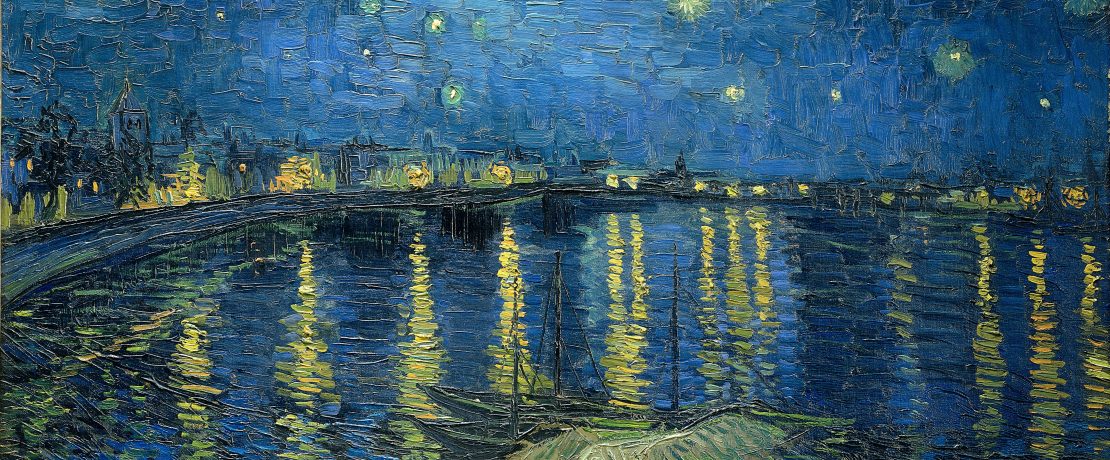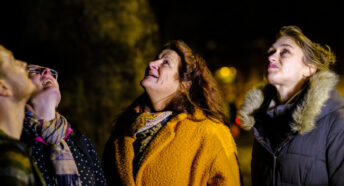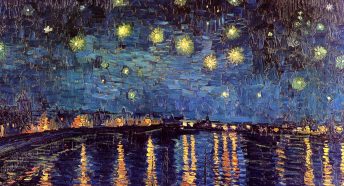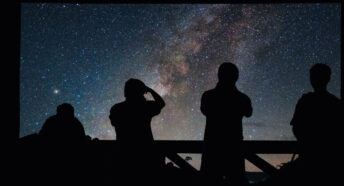Star Count 2022 – the results are in and it’s (mostly) good news!
About Star Count
Can you remember looking up to see spectacular starry night skies? It has probably been a while: although less than 100 years ago everyone could look up and see them, now 99% of Europeans cannot experience a natural night.
The Star Count is our annual citizen science project to map the nation’s changing views of the night sky. This year more than 2500 people took part, counting how many stars they could see with the naked eye in the constellation of Orion (the one with three stars in a line) on a clear night between 26 February and 6 March.
We have used the results to work out where star-spotters can enjoy dark skies and where light pollution reduces the number of stars which are visible. And this information will inform our work to reduce light pollution and improve our views of the night skies.
The results
The good news is that we are enjoying the best views of the night sky since the Star Count started in 2011.
Severe light pollution is when you can only see – at most – ten stars in the constellation of Orion. The worst results since our Star Count began were in 2020, when only 39% of participants could see more than ten stars. But in 2021 49% could see more than ten and this year it has improved even further to 51%.
However, not so many people are experiencing truly dark skies: only 3% saw more than 30 stars this year, compared to 5% last year.
Why is there less severe light pollution?
It was during lockdown that we first recorded a significant reduction in the level of severe light pollution. But, despite lockdown now being well behind us, there has not been a corresponding increase in light levels. This ‘lockdown legacy’ appears to be a combination of more home working and – sadly – soaring energy prices. Emma Marrington, CPRE’s dark skies campaigner, said:
“Half of the people who took part in Star Count experienced severe light pollution that obscures their view of the night sky. This is bad for wildlife and human health – and the energy being needlessly wasted is bad financially and bad for our planet.
But the good news is that these results show small adaptations can make a big difference. If there is a silver lining from the legacy of lockdown and, now, the soaring cost of energy, it is that it has never been clearer how simple it is to cut carbon emissions and energy bills while improving our natural environment.”
‘Starry, starry nights’ are good for us
A clear view of a star-filled night sky is not only an awe-inspiring experience but it actually has a hugely beneficial effect on our mental health, helping to reduce stress and increase our sense of wellbeing. Research has even shown that regularly spending time looking at the stars can lower blood pressure and reduce depression.
Crispin Truman, chief executive of CPRE, said:
“The night sky is one half of our experience of nature; but we don’t often think of it like that. In and of itself, it helps balance our mental health and boost our emotional wellbeing. Recollect that experience of a starry sky and you instinctively know it soothed you.
But our view of the night sky – and all the benefits it undoubtedly brings – is being blotted out by light pollution. Like all forms of pollution, it is damaging our mental and physical health, and also having a severe impact on wildlife. Yet it is a form of pollution that is allowed to increase year on year without any effort being made to control the damage it is causing.”
As Bob Mizon of the British Astronomical Association’s Commission for Dark Skies explains:
“. . . lack of regulation of lighting in this country and the fact that the night sky still hasn’t the protection in law seen in some other countries, mean that most Britons still have little chance of seeing the Milky Way and other sky wonders from where they live. Biodiversity will continue to suffer as we cast (especially blue-rich) light into rural areas.”
What can we do?
We can all play a part by turning off garden lights when not in use, as well as encouraging businesses to reduce overnight office lighting. We can also encourage councils to dim street lights and invest in well-designed lighting (used only where and when needed), as well as adopt policies in local plans to reduce light pollution.
And, if you would like to join with us in working for amazing night skies, we would love to welcome you aboard as a CPRE member. From as little as £3 a month you can support our work for dark skies and get some great perks too, such as reduced entry to over 100 attractions and discounts on outdoor kit!







